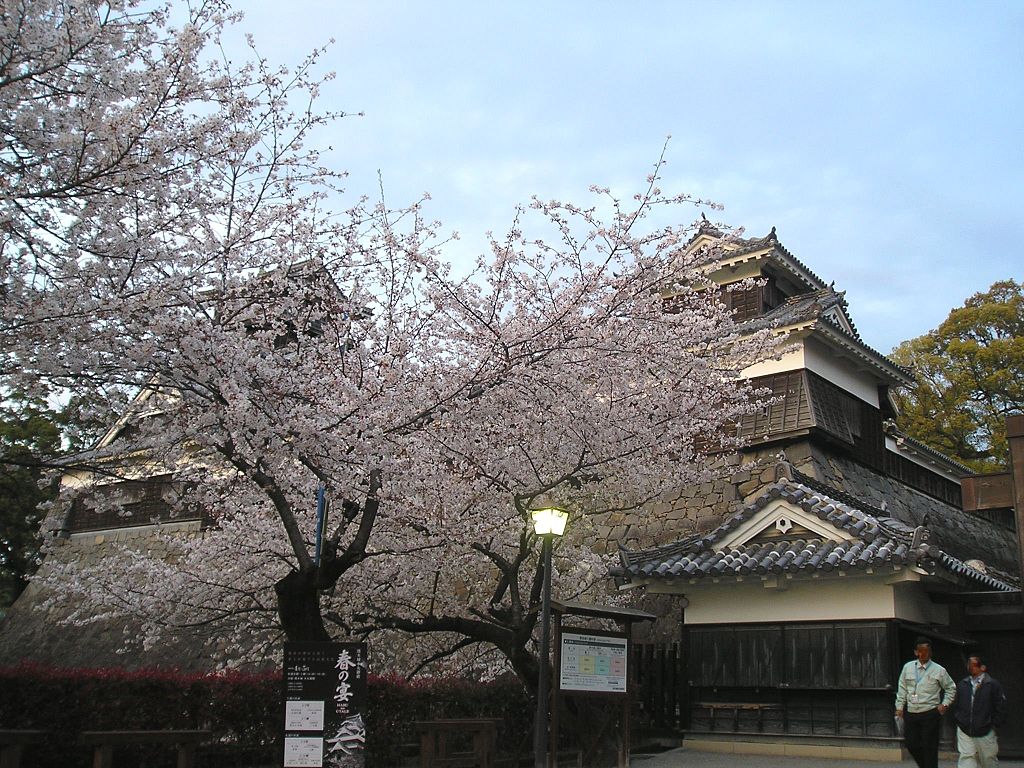Feb 24, 2023
Top Hanami Sites in Kumamoto
With spring approaching fast, people’s attention starts to Japan’s Hanami season. Hanami means “flower viewing,” and it’s the annual period in Japan, usually around late March and early April when people gather in public spaces to watch the blooming of the country’s cherry blossom (Sakura) trees. Hanami is a centuries-old Japanese tradition, and it’s common for people to gather in parks and other outdoor spaces to celebrate with picnics, parties, and sometimes festivals.
If you’re in the Kumamoto area, there are some great Hanami spots. All you need to do is pick one, plan what you will do, and ensure you get there early on the day if you want a spot for a picnic. Hanami’s exact time of year can vary according to the seasonal climate, but it’s usually around the end of March/the start of April. Full bloom (mankai) is typically around the turn of the month. You can use this weather map (in Japanese) to help plan activities.
Here are some of the top hanami spots for Kumamoto.
Kumamoto Castle
Kumamoto’s historic 17th-century castle is one of the city’s big tourist attractions and is considered one of Japan’s three most famous large castles. It’s the most popular Hanami spot in the city, with around 800 cherry blossom trees within its grounds and a few hundred more in the adjacent parks. The best spots are in the square in front of the castle – where the trees are often lit up with lanterns for night-time viewing during the Hanami period – and along the naga-bei (long wall). Some areas of the castle grounds have been restricted since the 2016 earthquake in the city, so it’s advisable to check the website for availability before your visit.
Website: https://castle.kumamoto-guide.jp/en/
Isshingyo Park
This park, which sits in the shadow of Mt. Aso not far from Higo-Ozu station, is famed in Japan for its single giant 400-year-old cherry blossom tree. A natural wonder that stands around 14 meters high, 7 meters wide, and with branches extending 26 meters, the tree has been cared for by locals for centuries. Its branches have been bent outwards by lightning strikes, so it gives off the appearance from a distance of a bird spreading its wings. The glorious pink coloring during the Hanami period contrasts beautifully with the yellow of the surrounding rapeseed flower fields that are best viewed by car.
Address: 3226-1 Nakamatsu, Minamiaso-mura, Aso-gun, Kumamoto 869-1505
Suizenji Garden
Suizenji Garden is an elegant 17th-century landscape that is one of Kumamoto’s most popular and eye-catching natural spaces. It features a large pond, cultivated garden space, and several miniature replica creations, including a small Mt. Fuji. Around the gardens are approximately 150 cherry blossom trees, best enjoyed either during a stroll around the garden’s circular path or while having a nice picnic on the lawn. The entry fee to the park is 400 yen.
Website (in Japanese): http://www.suizenji.or.jp/
Hitoyoshi Steam Locomotive
Fancy a Hanami experience that’s a little bit different? How does seeing a rich line of cherry blossoms from an old-fashioned steam locomotive train sound? JR Kyushu rail company runs trains from Kumamoto to Hitoyoshi station, taking you past rows of cherry blossoms blooming on the riverside. The journey takes around 2.5 hours, and you can buy a range of food and refreshments on board, including ekiben bento boxes. There are only a few trains each day, so it’s worth booking in advance. Prices are 2,640 yen for adults and 1,320 yen for children for a one-way journey.
Website: http://www.jrkyushu.co.jp/english/train/sl.html
Yunoko Cherry Line
Another perfect Hanami journey, the Yunoko Cherry Line, is 5 kilometers of coastal road from the downtown area of Minamata to the spring resort of Yunoko. The stretch is lined with around 500 Somei Yoshino cherry trees. There are also a couple of parks along the route if you want to stop and enjoy a picnic or admire the view.
Website: https://kumamoto.guide/en/spots/detail/10235
STA 3816, CC BY-SA 3.0, via Wikimedia Commons


About the author